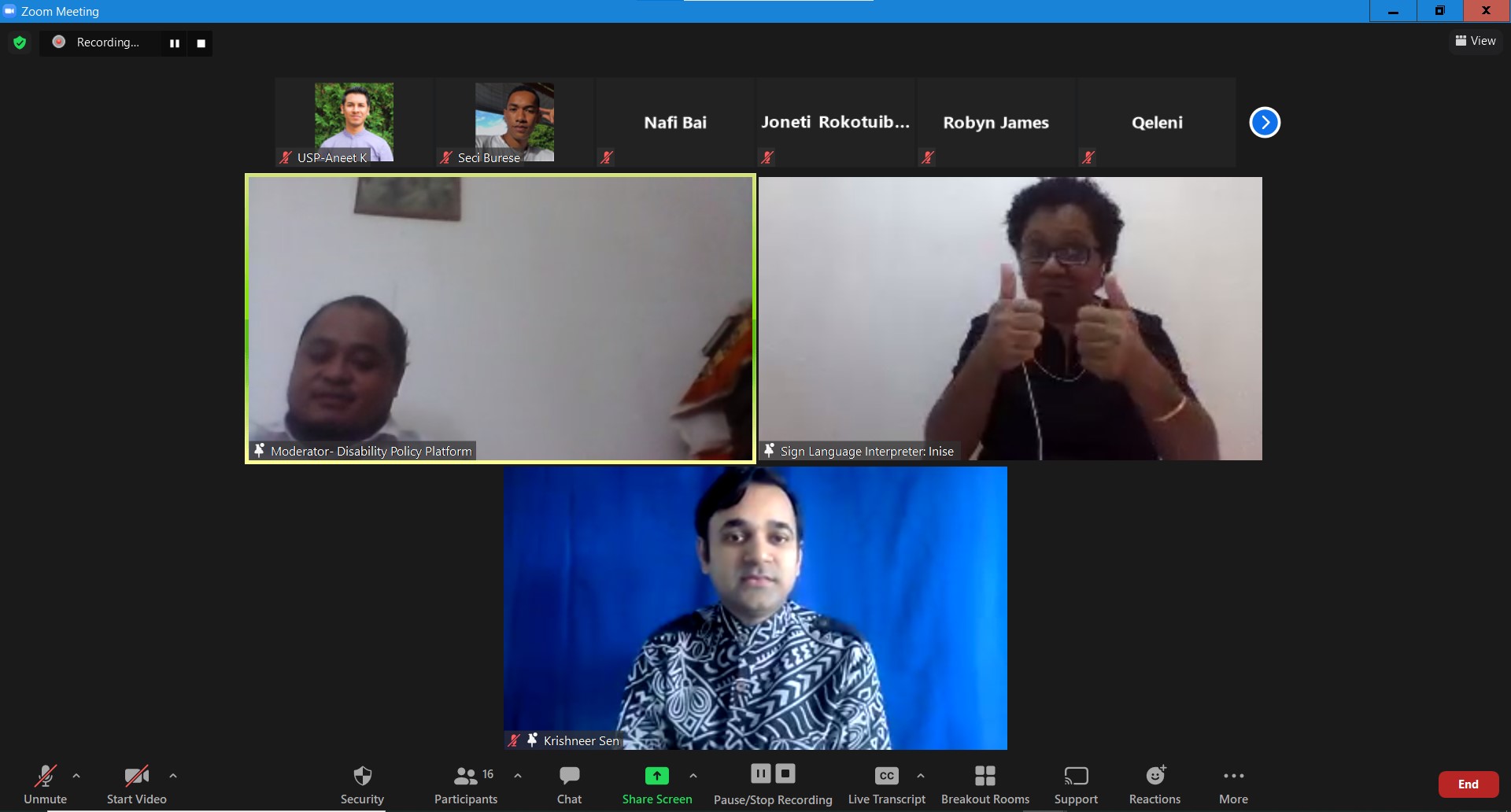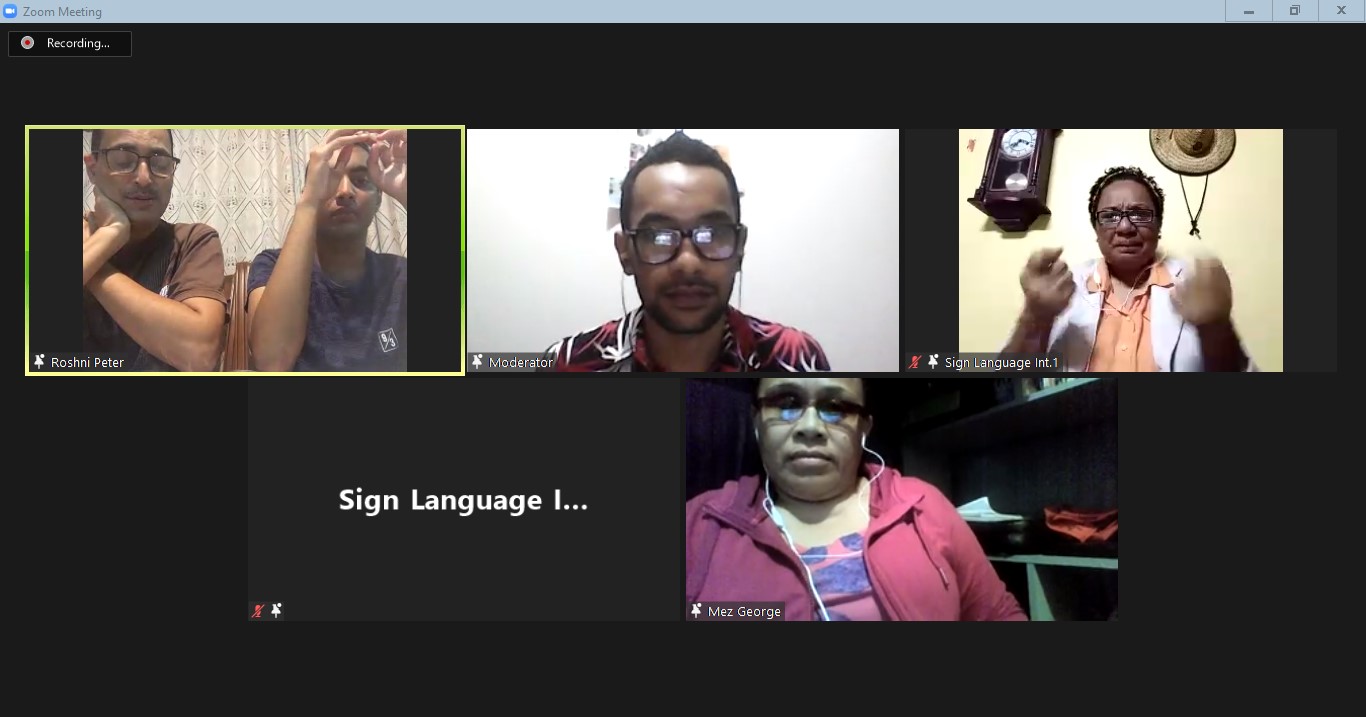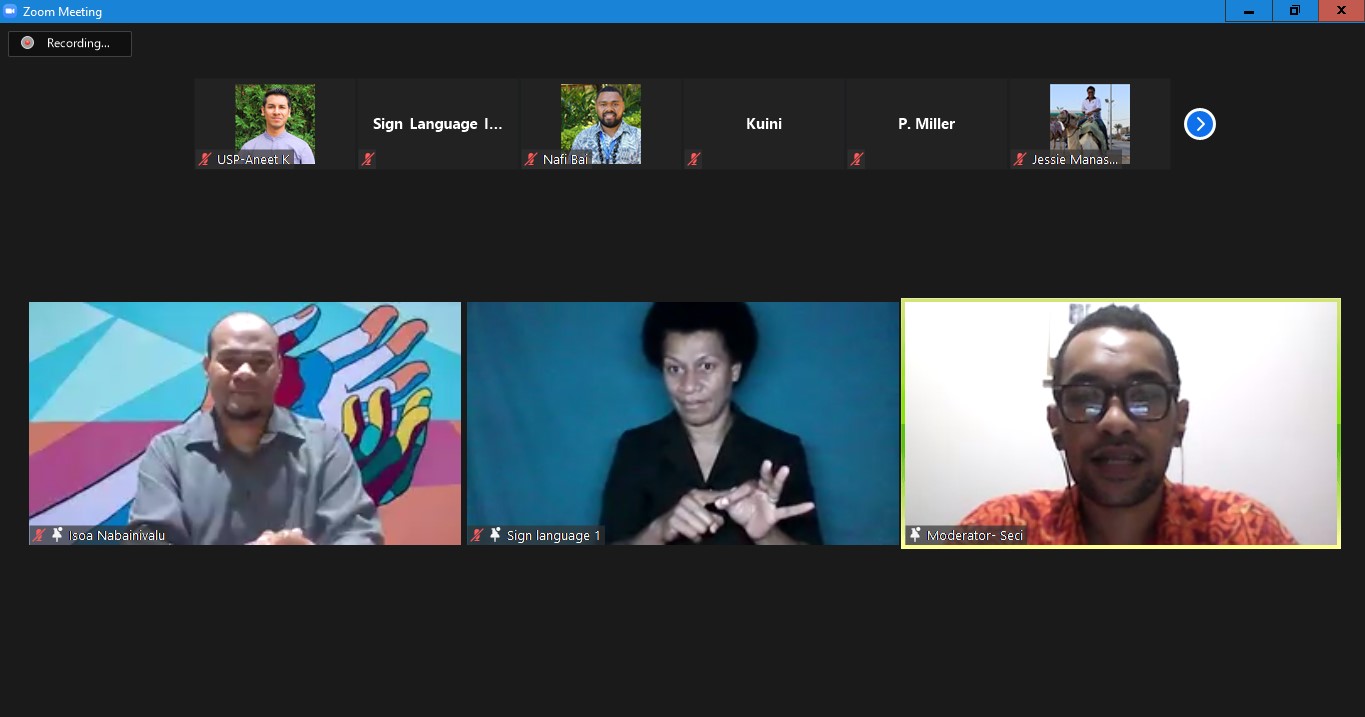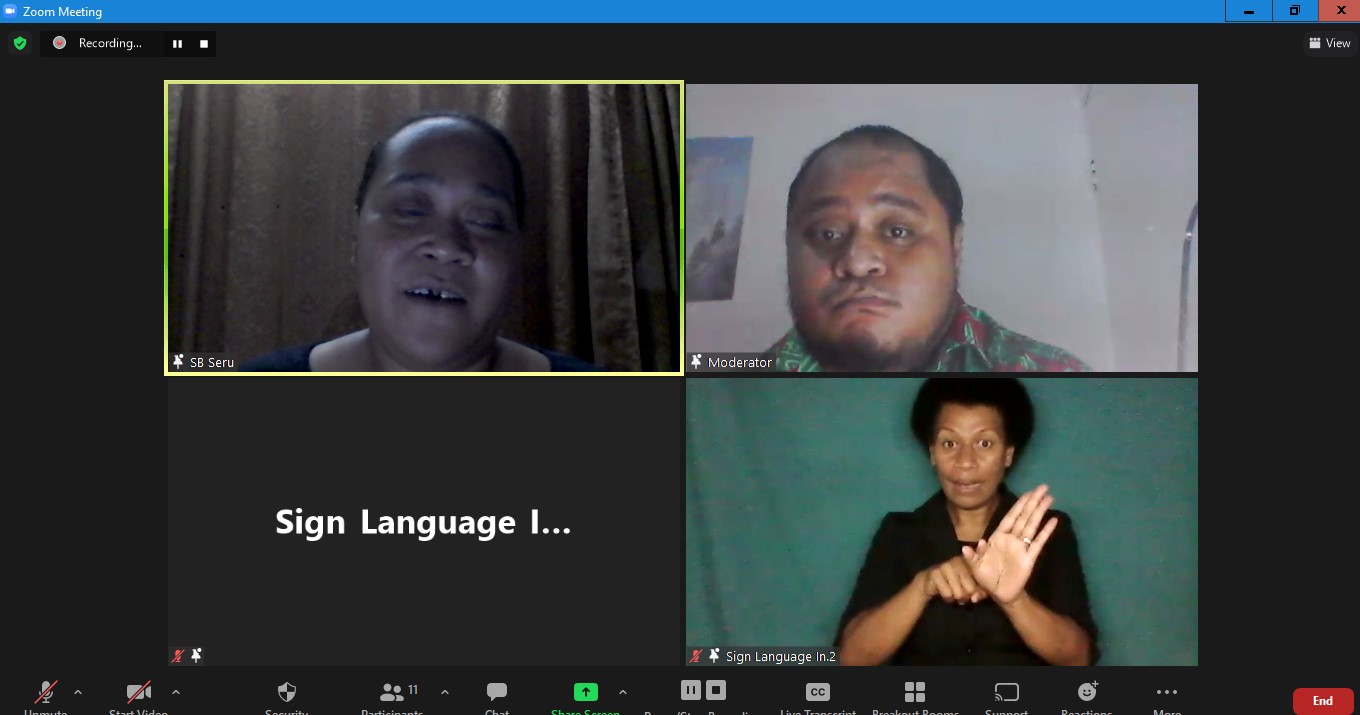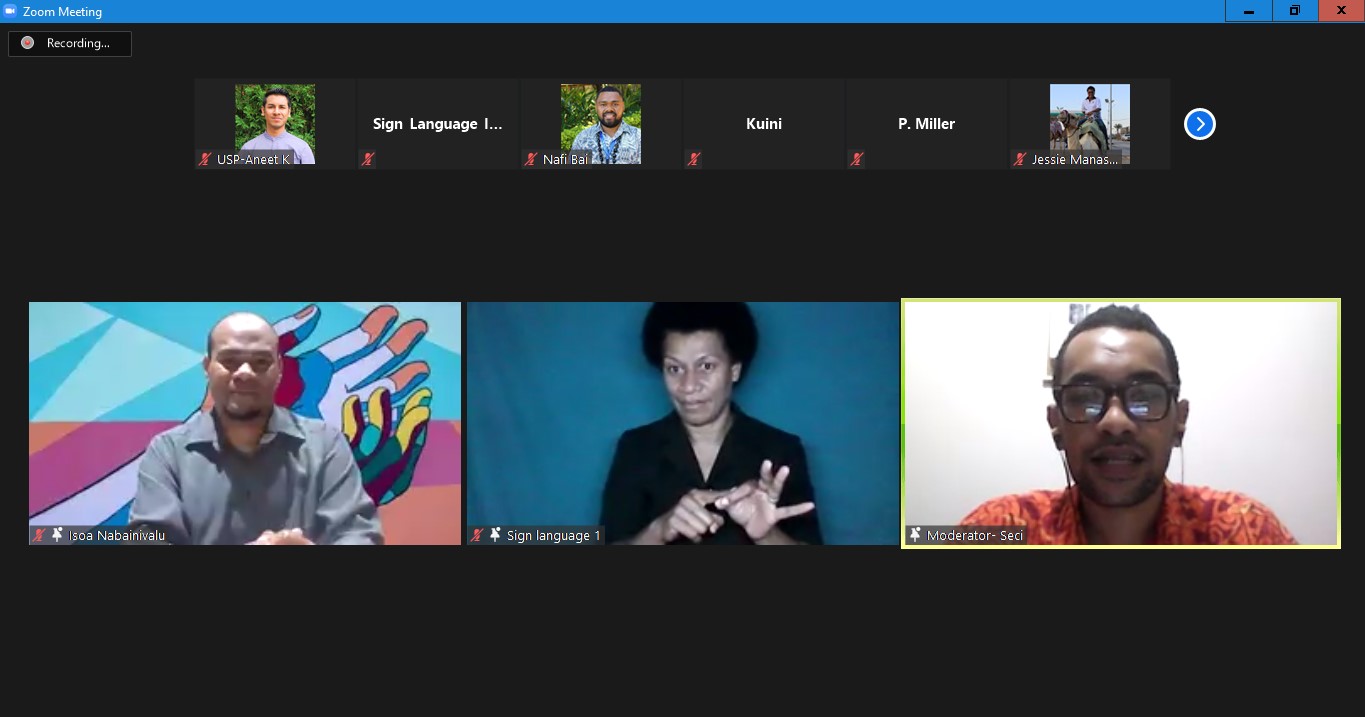The Pacific Youth Policy Platform
Project Status: Completed, see press release here: Youth Leaders Finalize Policy Platform Focusing on Disability Rights, Education, and Youth
Introduction
Pacific Island youth face a number of barriers when it comes to participating in civic and political life. The COVID-19 pandemic has exacerbated some of these challenges and created new obstacles for young people. University of South Pacific Student Association students and young leaders from Fiji, Kiribati, Nauru, Solomon Islands, and Vanuatu identified policy areas of importance with support from the International Foundation for Electoral Systems (IFES). This policy platform provides recommendations from young leaders on how to address the inclusive participation of persons with disabilities, young people, and more inclusive and COVID-19 responsive education across the Pacific Islands region.
Justification
According to UNICEF, more than half of the population of the Pacific Island region is comprised of children and young people, which truly highlights the importance of including their opinions and voices in decision-making processes. The Pacific Youth Development Framework 2014-2023 demonstrates how youth-led advocacy and participation contributes to regional development. The document ensures priority areas of importance to youth are recognized and acted upon at national and regional levels. However, as noted in the Pacific Youth Development Framework, a concerning and significant proportion of the youth population in the Pacific is excluded from mainstream development efforts. For example, young people who are not in education, employment and training; young women; rural youth; young people with disabilities; and, youth who are discriminated against because of their sexual orientation or gender identity and expression have been marginalized from development processes.
As members of the United Nations (UN), Pacific Island countries are parties to the UN Declaration of Human Rights which outlines rights for all human beings. Pacific Island countries are also committed to the promotion and achievement of the 2030 Sustainable Development Goals (SDGs) including SDG 4 which promotes inclusive and quality education for all and SDG 16 which ensures responsive, inclusive, participatory and representative decision-making at all levels. Most Pacific Island countries have ratified the United Nations Convention on the Rights of Persons with Disabilities (CRPD). Further, the Pacific Framework for the Rights of Persons with Disabilities aligns with the CRPD and identifies action items for Pacific Island countries to implement by 2025.
Recognizing the importance of inclusive participation and working to progress Pacific Island countries toward achieving the SDGs, Pacific Island youth have identified disability rights, youth participation, and education as key priority areas that require attention and support from all Pacific Island countries during the COVID-19 environment and beyond.
Policy Area 1: Disability Rights
There is a lack of general knowledge in the region about the rights of persons with disabilities, and young people with disabilities are impacted by limited or non-existent infrastructure in Pacific Islands countries. This is reflected through the lack of public amenities such as designated washrooms; ramps; and other relevant infrastructure. This is also evident in public spaces, schools, workplaces and restaurants. Young people with disabilities often lack the necessary transportation means to travel to
official events, meetings with government bodies and election centers. These barriers are further exacerbated for youth with disabilities in rural areas. There is a critical lack of incentives for caregivers, medical and health officers to support persons with disabilities in many island nations. Finally, stigma and systemic barriers prevent persons with disabilities from obtaining professional opportunities or advancement.
National and elected leaders should take the following actions:
- Make reasonable accommodations available to persons with disabilities, including providing assistive devices for persons with disabilities in all sectors of life and funding for caregivers and assistants for persons with disabilities.
- Build shelters that are accessible and within COVID-19 guidelines to maintain health and safety for persons with disabilities.
- Increase opportunities for scholarships and workplace training opportunities, including funds to engage youth with disabilities in sports.
Policy Area 2: Youth Participation
Young people have the right to participate in decision-making processes and spaces where they can express their opinions relating to all issues including politics, climate, environment, education, health, finance, sports and business. However, several barriers limit their participation in decision-making locally and nationally. These issues include limited opportunities to share their opinions, lack of consultation in meetings, perceived lack of experience and expertise, cultural barriers where young people cannot speak up out of respect for their elders, fear of being harmed for expressing their opinions, lack of knowledge of their rights, shortage of connectivity resources such as internet or communication devices and lack of educational and employment opportunities.
The government should invest in creating inclusive and accessible spaces for young people to speak publicly on issues in their community and at the national and regional levels. Young leaders should be trained and involved with governing their communities. National and elected leaders must take the following actions:
-
- Create mechanisms for young people to participate in formal decision-making processes.
- Develop a National Law on Youth to formally acknowledge young people’s agency and provideguidance around youth participation.
- Explore, invest and develop career professional guidance and exchange program within Pacific for young professionals.
Policy Area 3: Education
The quality of education in any country relies on a myriad of complex factors, but one particularly significant factor is the quality performance of teachers. Curricula are also of importance and should be reviewed for relevance, comparability and flexibility in delivery. Content should be more diverse and consider learners with disabilities, integration of creative arts, physical education, reproductive health education, life skills and technical/vocational education. Increased investment in resources to support infrastructure and scholarships is also needed, to make education more accessible. Finally, increased and urgent investment is needed to improve school accessibility.
The COVID-19 pandemic adds additional complexities to these issues but also has made it clear that teachers are still working above and beyond the classroom. The lockdowns and school closures have proven teachers’ determination to deliver quality education to their students despite the added challenges of virtual teaching/online delivery and other different methods of teaching amidst the COVID-19 pandemic. Many students are being left behind, as their education is no longer accessible or reachable due to connectivity issues, lack of resources and school closures. National and elected leaders should take the following actions:
- Prioritize the attraction, training, retention, and support of teachers.
- Review and revise education curriculum for relevancy and comparability, and diversity in contentand delivery.
- Increase, invest, and diversify funding and resource support to make education more accessible.

